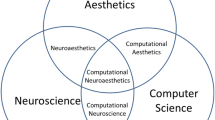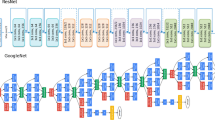Abstract
In this article, a minimum neural network topology in terms of units and connections (neurons and weights), making visual aesthetically categorized images, will be identified. For this purpose, an analysis to compact the initial neural network will be conducted by reducing the amount of connections and neurons required for an a esthetic classification function in hidden layers. A collection of photographs and aesthetic evaluations from an online voting site for photographs such as Photo.net was used. Such pictures are defined by ad-hoc metrics used in previous studies. In this way, the input data, the images, are interpreted within a minimum complexity scheme by complexity estimators (internal representations). The results obtained show that the optimized topology found retains both its performance and its ability to generalize. As part of this study, it has been found a relationship concerning the input data and minimum topology necessary for its correct representation, demonstrating statistically a performance comparable to other not minimized topologies.






Similar content being viewed by others
References
Ambroise C, McLachlan GJ (2002) Selection bias in gene extraction on the basis of microarray gene-expression data. Proc Natl Acad Sci 99(10):6562–6566. https://doi.org/10.1073/pnas.102102699
Arnheim R (1954) Art and visual perception: a psychology of the creative eye. University of California Press, Oakland
Birkhoff GD (1933) Aesthetic measure. Mass, Cambridge
Blum A (1992) Neural networks in C++: an object-oriented framework for building connectionist systems. John Wiley and Sons Inc, New York
Bu Y, Zhao G, Luo AL, Pan J, Chen Y (2015) Restricted boltzmann machine: a non-linear substitute for pca in spectral processing. Astron Astrophys 576:A96. https://doi.org/10.1051/0004-6361/201424194
Canny J (1986) A computational approach to edge detection. IEEE Trans Pattern Anal Mach Intell 8(6):679–698
Carballal A, Castro L, Perez R, Correia J (2014) Detecting bias on aesthetic image datasets. Int J Creat Interfaces Comput Gr (IJCICG) 5(2):62–74
Carballal A, Fernandez-Lozano C, Heras J, Romero J (2019) Transfer learning features for predicting aesthetics through a novel hybrid machine learning method. Neural Comput Appl 32:1–12
Carballal A, Fernandez-Lozano C, Rodriguez-Fernandez N, Castro L, Santos A (2019) Avoiding the inherent limitations in datasets used for measuring aesthetics when using a machine learning approach. Complexity
Chan MC, Wong CC, Lam CC (2000) Financial time series forecasting by neural network using conjugate gradient learning algorithm and multiple linear regression weight initialization. Comput Econ Finance 61:326–342
Chang CC, Lin CJ (2011) Libsvm: A library for support vector machines. ACM Trans Intell Syst Technol 2(3) https://doi.org/10.1145/1961189.1961199
Datta R, Joshi D, Li J, Wang JZ (2006) Studying aesthetics in photographic images using a computational approach. computer vision-ECCV 2006. Springer, Berlin, pp 288–301
Datta R, Jia Li, Wang JZ (2008) Algorithmic inferencing of aesthetics and emotion in natural images: an exposition. In: 2008 15th IEEE international conference on image processing, pp 105–108
Deng J, Dong W, Socher R, Li LJ, Li K, Fei-Fei L (2009) ImageNet: a large-scale hierarchical image database. In: CVPR09
Derrac J, García S, Molina D, Herrera F (2011) A practical tutorial on the use of nonparametric statistical tests as a methodology for comparing evolutionary and swarm intelligence algorithms. Swarm Evolut Comput 1(1):3–18. https://doi.org/10.1016/j.swevo.2011.02.002
Dong Z, Tian X (2015) Multi-level photo quality assessment with multi-view features. Neurocomputing 168:308–319
Eysenck HJ (1941) The empirical determination of an aesthetic formula. Psychol Rev 48(1):83
Fan Y, Xu K, Wu H, Zheng Y, Tao B (2020) Spatiotemporal modeling for nonlinear distributed thermal processes based on kl decomposition, mlp and lstm network. IEEE Access 8:25111–25121
Fernandez-Lozano C, Gestal M, Munteanu CR, Dorado J, Pazos A (2016) A methodology for the design of experiments in computational intelligence with multiple regression models. PeerJ 4:e2721
Guyon I, Weston J, Barnhill S, Vapnik V (2002) Gene selection for cancer classification using support vector machines. Mach Learn 46:389–422. https://doi.org/10.1023/A:1012487302797
Holland JH et al (1992) Adaptation in natural and artificial systems: an introductory analysis with applications to biology, control, and artificial intelligence. MIT press, Cambridge
Jia G, Li P, He R (2019) Theme aware aesthetic distribution prediction with full resolution photos. CoRR abs/1908.01308, http://arxiv.org/abs/1908.01308, 1908.01308
Kennedy J, Eberhart R (1995) Particle swarm optimization. In: Proceedings of ICNN’95-international conference on neural networks, IEEE, vol 4, pp 1942–1948
Kong S, Shen X, Lin Z, Mech R, Fowlkes CC (2016) Photo aesthetics ranking network with attributes and content adaptation. CoRR abs/1606.01621, http://arxiv.org/abs/1606.01621, 1606.01621
Krizhevsky A, Sutskever I, Hinton GE (2017) Imagenet classification with deep convolutional neural networks. Commun ACM 60(6):84–90. https://doi.org/10.1145/3065386
Lilliefors HW (1967) On the kolmogorov–smirnov test for normality with mean and variance unknown. J Am Stat Assoc 62(318):399–402
Liu SC, Chang S (1997) Dimension estimation of discrete-time fractional Brownian motion with applications to image texture classification. IEEE Trans Image Process 6(8):1176–1184
Machado P, Cardoso A (1998) Computing aesthetics. Advances in artificial intelligence. Springer, Berlin, pp 219–228
Machado P, Romero J, Santos ML, Cardoso A, Manaris B (2004) Adaptive critics for evolutionary artists. Applications of evolutionary computing. Springer, Berlin, pp 437–446
Machado P, Romero J, Manaris B (2008) Experiments in computational aesthetics. The art of artificial evolution. Springer, Berlin, pp 381–415
Machado P, Romero J, Nadal M, Santos A, Correia J, Carballal A (2015) Computerized measures of visual complexity. Acta Psychol 160:43–57. https://doi.org/10.1016/j.actpsy.2015.06.005
McClelland JL, Rumelhart DE, Group PR et al (1986) Parallel distributed processing. Explor Microstruct Cognit 2:216–271
McIntosh A (2016) The jackknife estimation method. arXiv preprint arXiv:160600497
McKnight PE, Najab J (2010) Mann–whitney \(u\) test. In: Corsini encyclopedia of psychology. John Wiley & Sons Inc, New York, USA, vol 1, p 1
Meier NC (1942) Art in human affairs; an introduction to the psychology of art. McGraw-Hill, New York
Melit Devassy B, George S (2020) Dimensionality reduction and visualisation of hyperspectral ink data using t-sne. Forensic Sci Int 311(110):194. https://doi.org/10.1016/j.forsciint.2020.110194
Moles AA (1957) Théorie de l’information et perception esthétique. Revue Philosophique de la France et de l’Étranger 147:233–242
Murray N, Marchesotti L, Perronnin F (2012) Ava: A large-scale database for aesthetic visual analysis. In: 2012 IEEE conference on computer vision and pattern recognition, IEEE, pp 2408–2415
Peres-Neto PR, Jackson DA, Somers KM (2005) How many principal components? Stopping rules for determining the number of non-trivial axes revisited. Comput Stat Data Anal 49:974–997
Probst P, Bischl B, Boulesteix AL (2018) Tunability: importance of hyperparameters of machine learning algorithms. 1802.09596
Rosenblatt F (1958) The perceptron: a probabilistic model for information storage and organization in the brain. Psychol Rev 65(6):386–408
Ramezan CA, Warner TA, Maxwell AE (2019) Evaluation of sampling and cross-validation tuning strategies for regional-scale machine learning classification. Remote Sens 11(2):185
Russell S, Norvig P (2009) Artificial intelligence: a modern approach, 3rd edn. Prentice Hall Press, New Jersey
Saunders R, Gero JS (2001) Artificial creativity: a synthetic approach to the study of creative behaviour. Computational and Cognitive Models of Creative Design V, Key Centre of Design Computing and Cognition, University of Sydney, Sydney pp 113–139
Shamshirband S, Rabczuk T, Chau K (2019) A survey of deep learning techniques: application in wind and solar energy resources. IEEE Access 7:164650–164666
Sobel I (1990) An isotropic 3x3 image gradient operator. In: Freeman H (ed) Machine vision for three-dimensional scenes. Academic Press, London, pp 376–379
Svangård N, Nordin P (2004) Automated aesthetic selection of evolutionary art by distance based classification of genomes and phenomes using the universal similarity metric. Applications of evolutionary computing. Springer, Berlin, pp 447–456
Szegedy C, Vanhoucke V, Ioffe S, Shlens J, Wojna Z (2015) Rethinking the inception architecture for computer vision. CoRR abs/1512.00567, http://arxiv.org/abs/1512.00567, 1512.00567
Taylor RP, Micolich AP, Jonas D (1999) Fractal analysis of pollock’s drip paintings. Nature 399(6735):422
Wang WC, Xu L, Chau KW, Xu DM (2020) Yin-yang firefly algorithm based on dimensionally cauchy mutation. Expert Syst Appl 150(113):216. https://doi.org/10.1016/j.eswa.2020.113216
Williams RJ, Zipser D (1989) A learning algorithm for continually running fully recurrent neural networks. Neural Comput 1(2):270–280
Yan K, Xiaoou T, Feng J (2006) The design of high-level features for photo quality assessment. In: 2006 IEEE computer society conference on computer vision and pattern recognition (CVPR’06), vol 1, pp 419–426
Zipf GK (1949) Human behavior and the principle of least effort. Addison-Wesley Press, Boston
Acknowledgements
This work is supported by the General Directorate of Culture, Education and University Management of Xunta de Galicia (Ref. ED431D 201716) and Competitive Reference Groups (Ref. ED431C 201849). This work has also been supported by CITIC, as a Research Centre of the Galician University System, is financed by the Regional Ministry of Education, University and Vocational Training of the Xunta de Galicia through the European Regional Development Fund (ERDF) with 80%, Operational Programme ERDF Galicia 2014-2020, and the remaining 20% by the General Secretariat of Universities (Ref. ED431G 2019/01). We gratefully acknowledge the support of NVIDIA Corporation with the donation of the Tesla K40 GPU used for this research.
Author information
Authors and Affiliations
Corresponding author
Ethics declarations
Conflict of interest
The authors declare that they have no conflict of interest.
Additional information
Publisher's Note
Springer Nature remains neutral with regard to jurisdictional claims in published maps and institutional affiliations.
Rights and permissions
About this article
Cite this article
Carballal, A., Cedron, F., Santos, I. et al. Minimal neural network topology optimization for aesthetic classification. Neural Comput & Applic 33, 107–119 (2021). https://doi.org/10.1007/s00521-020-05550-x
Received:
Accepted:
Published:
Issue Date:
DOI: https://doi.org/10.1007/s00521-020-05550-x




